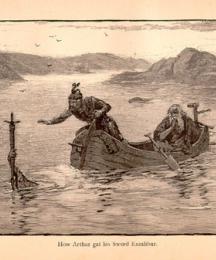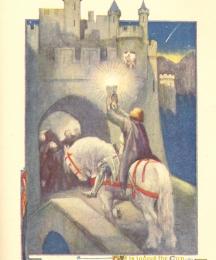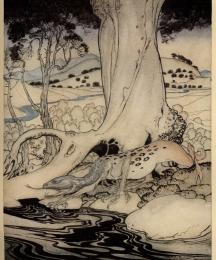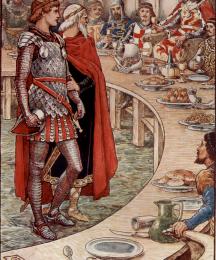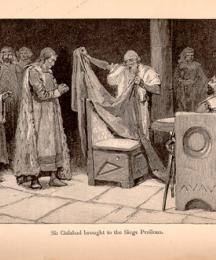Robbins Library Digital Projects Announcement: We are currently working on a large-scale migration of the Robbins Library Digital Projects to a new platform. This migration affects The Camelot Project, The Robin Hood Project, The Crusades Project, The Cinderella Bibliography, and Visualizing Chaucer.
While these resources will remain accessible during the course of migration, they will be static, with reduced functionality. They will not be updated during this time. We anticipate the migration project to be complete by Summer 2025.
If you have any questions or concerns, please contact us directly at robbins@ur.rochester.edu. We appreciate your understanding and patience.
While these resources will remain accessible during the course of migration, they will be static, with reduced functionality. They will not be updated during this time. We anticipate the migration project to be complete by Summer 2025.
If you have any questions or concerns, please contact us directly at robbins@ur.rochester.edu. We appreciate your understanding and patience.
The Sword in the Stone, sometimes a sword in an anvil, is drawn by Arthur as proof of his birthright and of his nobility. It is both a test and a miraculous sign of his royalty. The sword drawn from the stone is different from the one given to Arthur by the Lady of the Lake. The latter is always referred to as Excalibur; the former is called by...
The "Fair Unknown" is a universally popular folk motif with strong Arthurian connections in which a young man of questionable lineage becomes an integral part of society. Initially appearing in court without an established identity, the Fair Unknown nevertheless boldly demands to be knighted. He tends to be markedly — albeit...
The Holy Grail is generally considered to be the cup from which Christ drank at the Last Supper and the one used by Joseph of Arimathea to catch his blood as he hung on the cross. This significance, however, was introduced into the Arthurian legends by Robert de Boron in his verse romance Joseph d'Arimathie (sometimes also called Le Roman de l'...
The Questing Beast (also called the Bizarre Beast or the Beste Glatisant) appears briefly in French and English medieval texts. In French, it appears in three thirteenth-century texts – the Prose Tristan, Perlesvaus, and the Post-Vulgate cycle.1 In English, it appears in Malory’s fifteenth-century Morte D'Arthur. The creature's...
Wace first introduces the notion of the Round Table in his Roman de Brut. Wace writes that King Arthur had it made so that all of the noble barons whom he attracted to his court would be equally placed and served and none could boast that he had a higher position at the table than the others. Layamon expands on this notion, describing a riot at...
The Siege (from the French siège, seat) Perilous is the seat at Arthur’s Round Table in which only the chosen knight can sit. In the prose rendition of Robert de Boron’s Merlin, the empty seat is reminiscent of the seat that Judas vacated. There is also an empty seat at Joseph of Arimathea’s Grail Table which destroys...



